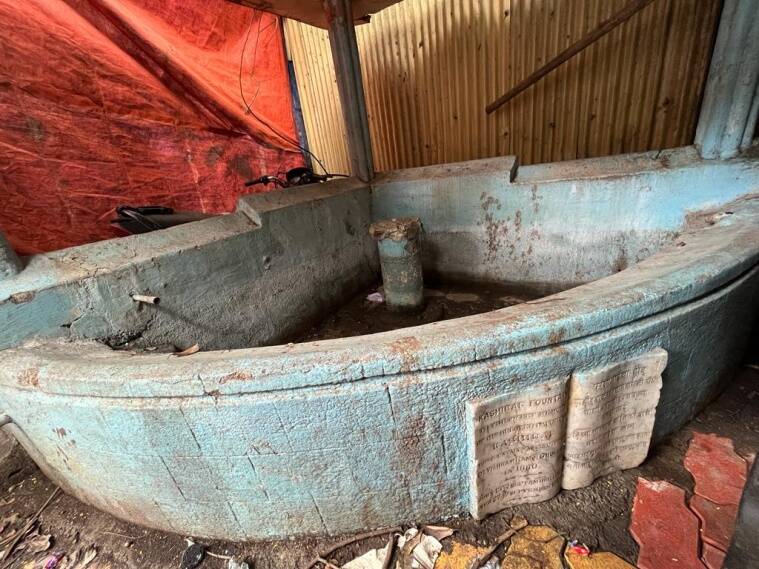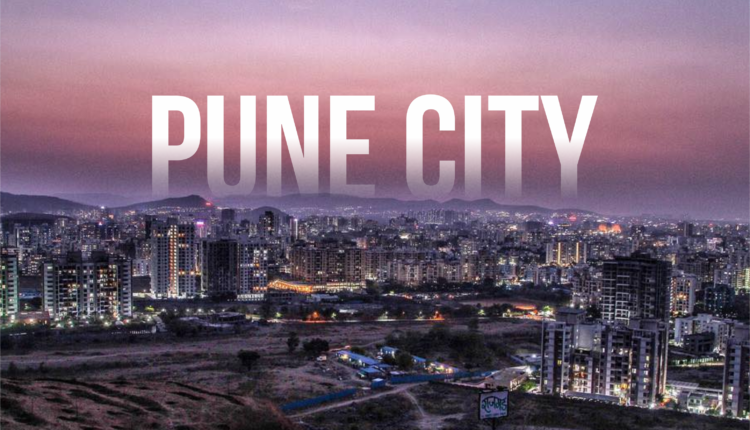Know Your City: Bahulicha Haud, a Pune monument to a daughter lost to the cause of women’s education
On this day 149 years ago, Mahatma Jyotirao Phule took along a group of like-minded people from Pune and founded Satyashodhak Samaj (Truth Seeking Society) in Pune to foster equality and brotherhood in Indian society by ending caste discrimination and harmful religious customs. Among the handful of supporters who attended the meeting on September 24, 1873, and backed the proposal of founding Satyashodhak Samaj was Dr Vishram Ramji Ghole.
Dr Ghole, who later would also become the president of the Samaj, was a well-known surgeon in Pune (then Poona) holding the title of ‘Honorary Surgeon of the Viceroy’. He came from a ‘backward caste’ and enjoyed a good rapport with elites of all hues, including those from the fiercely conservative upper class.
Dr Vishram Ramji Ghole offered his insights about social and health related matters of India to several commissions that were set up during his time.
Dr Ghole –spelt as Ghollay, Gholay, and Ghole in various documents – was a man of progressive inclinations who not only espoused progressive ideas in his public life and donated generously for those causes (including the Satyashodhak Samaj), but also practised progressivism in his private life.
“A proponent of women’s empowerment, he was determined to educate his first-born daughter Kashibai. At this time, there was considerable opposition to this idea in the general population. People believed that if girls are educated they will become sinners and that will ruin entire generations,” said Professor Pratima Pardeshi, who has written a biography of Dr Ghole in Marathi.
Going against a fiercely conservative society was not an easy feat and Dr Ghole, and his young daughter, who was fondly called ‘Bahuli’, paid a heavy price.
“Paying no regard to opposition from within and outside the family, he sent Kashibai to school. Some relatives, who felt that a grave error was being committed, took an extreme step and fed the eight-year-old girl crushed glass through food. She eventually died due to internal bleeding,” said Pardeshi.
Although Dr Ghole or his contemporaries have not explicitly detailed Kashibai’s death, according to Pardeshi, family members in the latter generations mentioned the incident in their correspondence and interviews.
“Ghole, who has not written any memoir, was not the kind of person who would make a personal tragedy into a public spectacle. Also when it comes to people from non-privileged castes, memories are the primary instrument of access to the past and one has no option but to rely on them,” said Pardeshi.
What is clear, however, is that Kashibai was born on September 13, 1869, and died on September 27, 1877. This is what Dr Ghole wrote on an epitaph that was put on a fountain that he erected in his daughter’s memory three years later.
 The Haud was shifted to its current location outside Faraskhana Police Station when Dagadusheth Halwai Ganpati temple was expanded. Here, it lives a life of neglect.
The Haud was shifted to its current location outside Faraskhana Police Station when Dagadusheth Halwai Ganpati temple was expanded. Here, it lives a life of neglect.
This fountain, located close to the Ghole family home in Jhamre Chavdi, became known as Bahulicha Haud. It has a fountain in the middle and a circular enclosure. The structure was so well known that what is today known as Dagadusheth Ganpati was once called Bahulichya Haudacha Ganpati.
A few decades ago, when the Dagadusheth Ganpati Temple was constructed at its present place, the fountain was relocated to its present unceremonious place – in a corner of the courtyard of Faraskhana Police Station.
Undeterred by his tragedy, Dr Ghole continued to stand for women’s right to education and participated in the setting up of Huzurpaga Women’s School in Pune in 1884. He educated his younger daughter Gangubai, who became a scholar of Vedic religion of considerable standing.
A doctor for all
Dr Ghole came from a well-to-do family from Anjanvel in modern-day Ratnagiri and was educated in Dapoli, Pune and Mumbai. His father was a Subhedar in the army. In 1852, a young Vishram got employed as an assistant surgeon with the British Army. During the Indian revolt of 1857, he provided valuable services to his employers and travelled through a great part of north India with the British-Indian army.
After he was transferred to Pune, he became a go-to doctor for the city’s elite – Brahmin and others alike, despite coming from a community that was considered lower in the rigid social structure of the Hindu community. He had close relations with Bal Gangadhar Tilak, M G Ranade, and Vishnushastri Chiplunkar, apart from those associated with Mahatma Phule’s movement.
Phule and Ghole enjoyed considerable clout in Pune Municipality with the latter being a nominated member for about 16 years. During this period, he undertook several important projects for the city, including starting an industry workshop, and worked closely with officials on the Khadakwasla Dam project for the supply of water to Pune city.
As per an account given by Phule’s foster son Yashwant about the reformer’s last days, Dr Ghole looked after him at personal costs and was always beside him in his hour of need. Although the Phule-Ghole relationship saw its share of bickering, they remained close until the end. In the monsoon of 1888, Phule suffered a paralysis attack and remained bedridden for a while. Dr Ghole’s care was instrumental in saving Phule’s life and partial recovery from paralysis. In his last book ‘Sarvajanik Satyadharma Pustak’, Phule wrote a couplet praising Dr Ghole and others who helped him during his illness. Phule’s health, however, continued to fall and he passed away in November 1890.
Dr Ghole died 10 years later on September 10, 1900, due to diabetes and stomach-related ailments.


